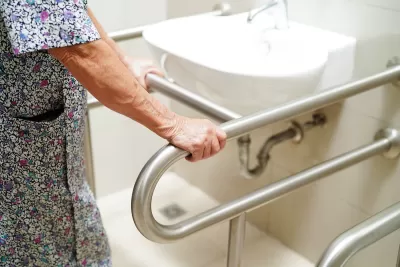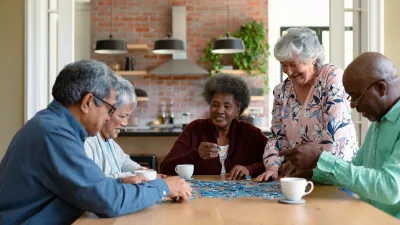While many people over 65 would prefer to stay in their homes and communities, high housing costs and a lack of accessible infrastructure make it difficult.

Housing policies and community infrastructure in many U.S. cities are not keeping up with demand as Americans age, according to a survey conducted by the AARP. Three-quarters of survey respondents said they wanted to remain in their current homes, explains Ysabelle Kempe in Smart Cities Dive.
As the baby boomer generation gets older, the number of adults over 65 is higher than ever. “Meanwhile, housing and care are becoming less affordable and accessible for older adults, defined as those who are at least 65 years old, according to a 2023 report from Harvard University’s Joint Center for Housing Studies.” Based on the AARP survey, 11.2 million Americans over 65 spend more than 30 percent of their income on housing. The accessibility — or lack thereof — of homes is also an issue for many older Americans who can’t afford to retrofit their homes or who live in rental housing.
To address these needs, the AARP recommends that policymakers support and expand rental assistance programs such as the Housing Choice Voucher program, support zoning reforms that encourage missing middle housing types like accessory dwelling units, and adopt Complete Streets policies that make cities more walkable and livable at any age.
FULL STORY: Housing policies must improve to meet older adults’ needs, AARP says

Maui's Vacation Rental Debate Turns Ugly
Verbal attacks, misinformation campaigns and fistfights plague a high-stakes debate to convert thousands of vacation rentals into long-term housing.

Planetizen Federal Action Tracker
A weekly monitor of how Trump’s orders and actions are impacting planners and planning in America.

Chicago’s Ghost Rails
Just beneath the surface of the modern city lie the remnants of its expansive early 20th-century streetcar system.

Bend, Oregon Zoning Reforms Prioritize Small-Scale Housing
The city altered its zoning code to allow multi-family housing and eliminated parking mandates citywide.

Amtrak Cutting Jobs, Funding to High-Speed Rail
The agency plans to cut 10 percent of its workforce and has confirmed it will not fund new high-speed rail projects.

LA Denies Basic Services to Unhoused Residents
The city has repeatedly failed to respond to requests for trash pickup at encampment sites, and eliminated a program that provided mobile showers and toilets.
Urban Design for Planners 1: Software Tools
This six-course series explores essential urban design concepts using open source software and equips planners with the tools they need to participate fully in the urban design process.
Planning for Universal Design
Learn the tools for implementing Universal Design in planning regulations.
planning NEXT
Appalachian Highlands Housing Partners
Mpact (founded as Rail~Volution)
City of Camden Redevelopment Agency
City of Astoria
City of Portland
City of Laramie





























